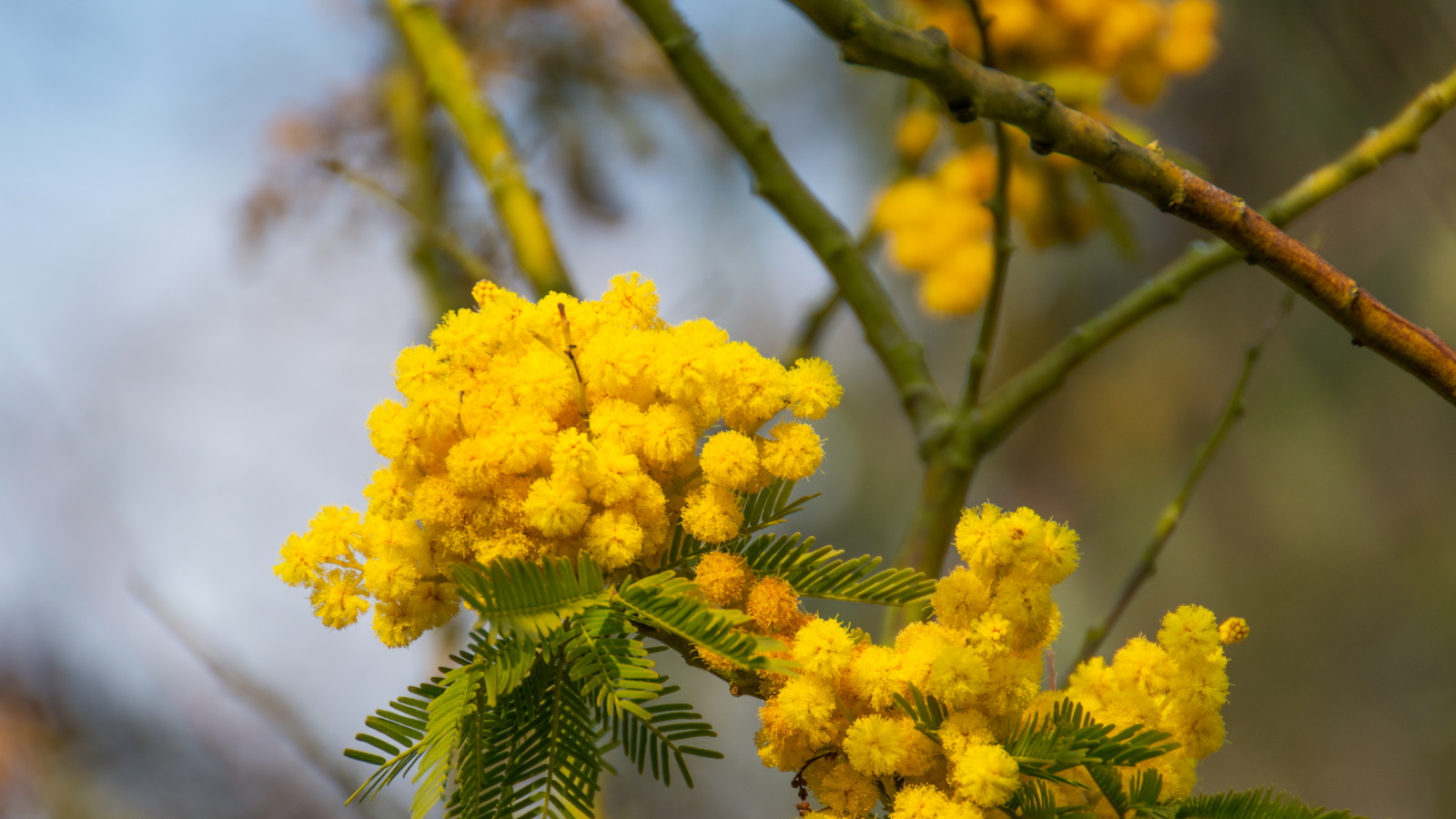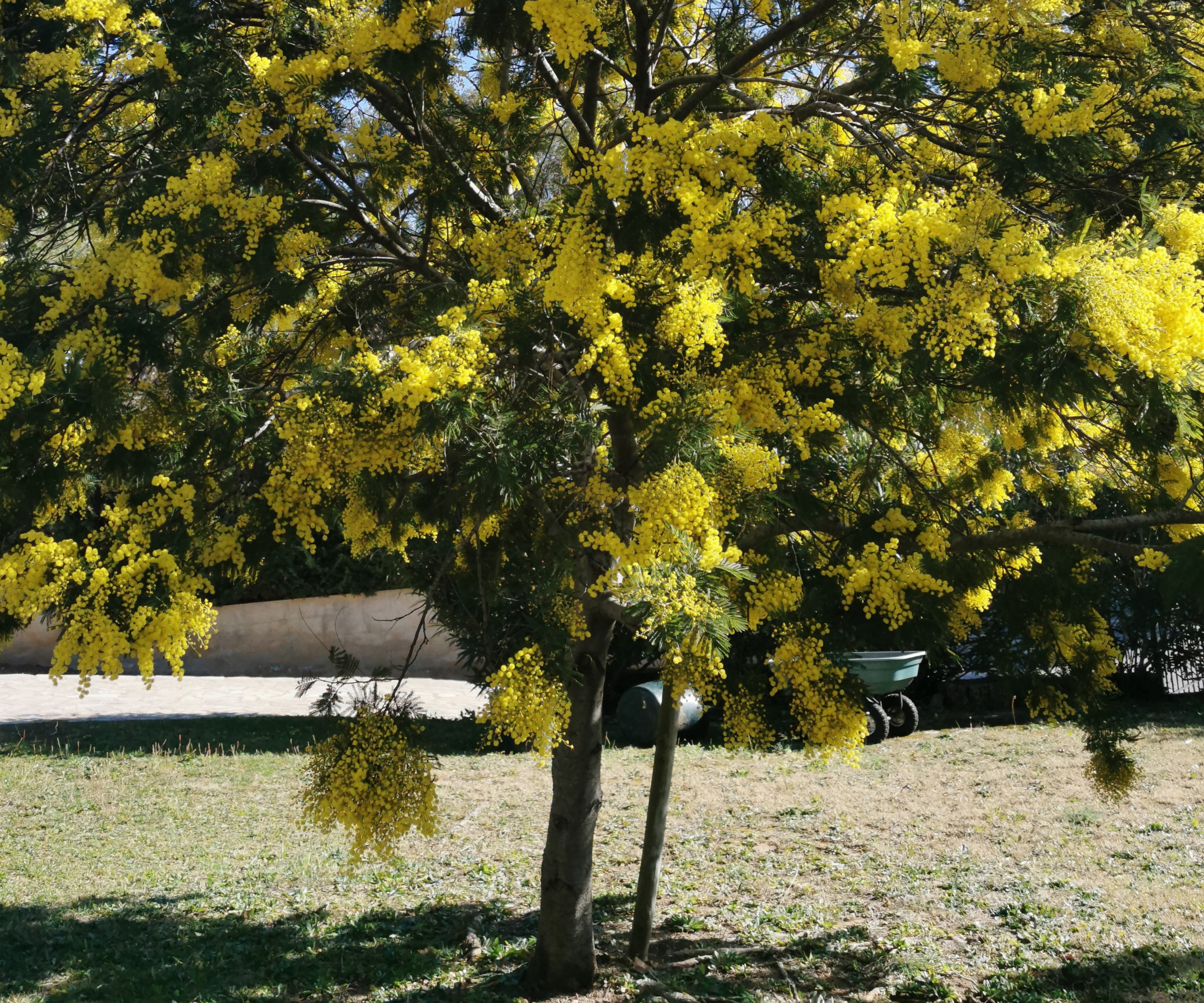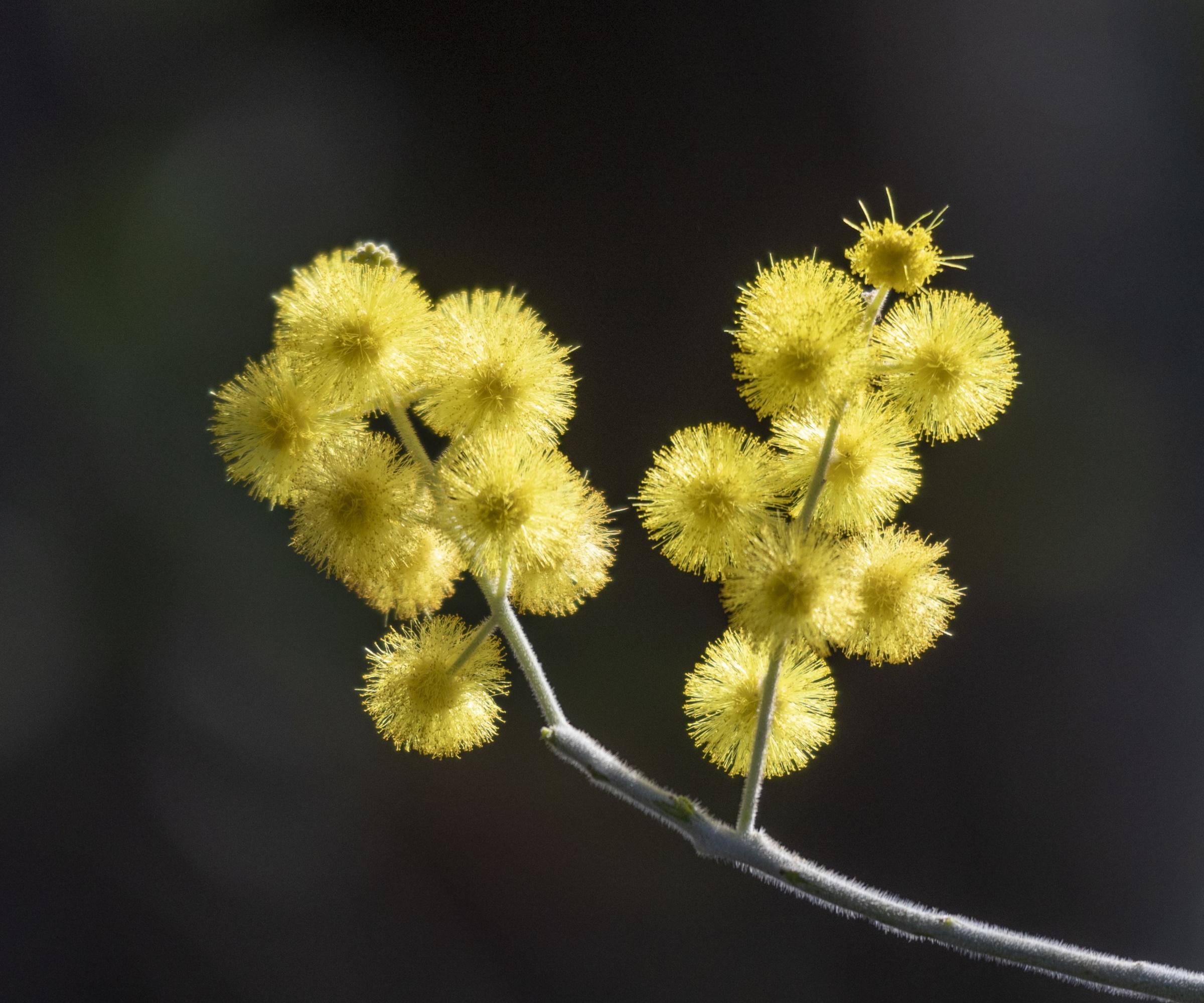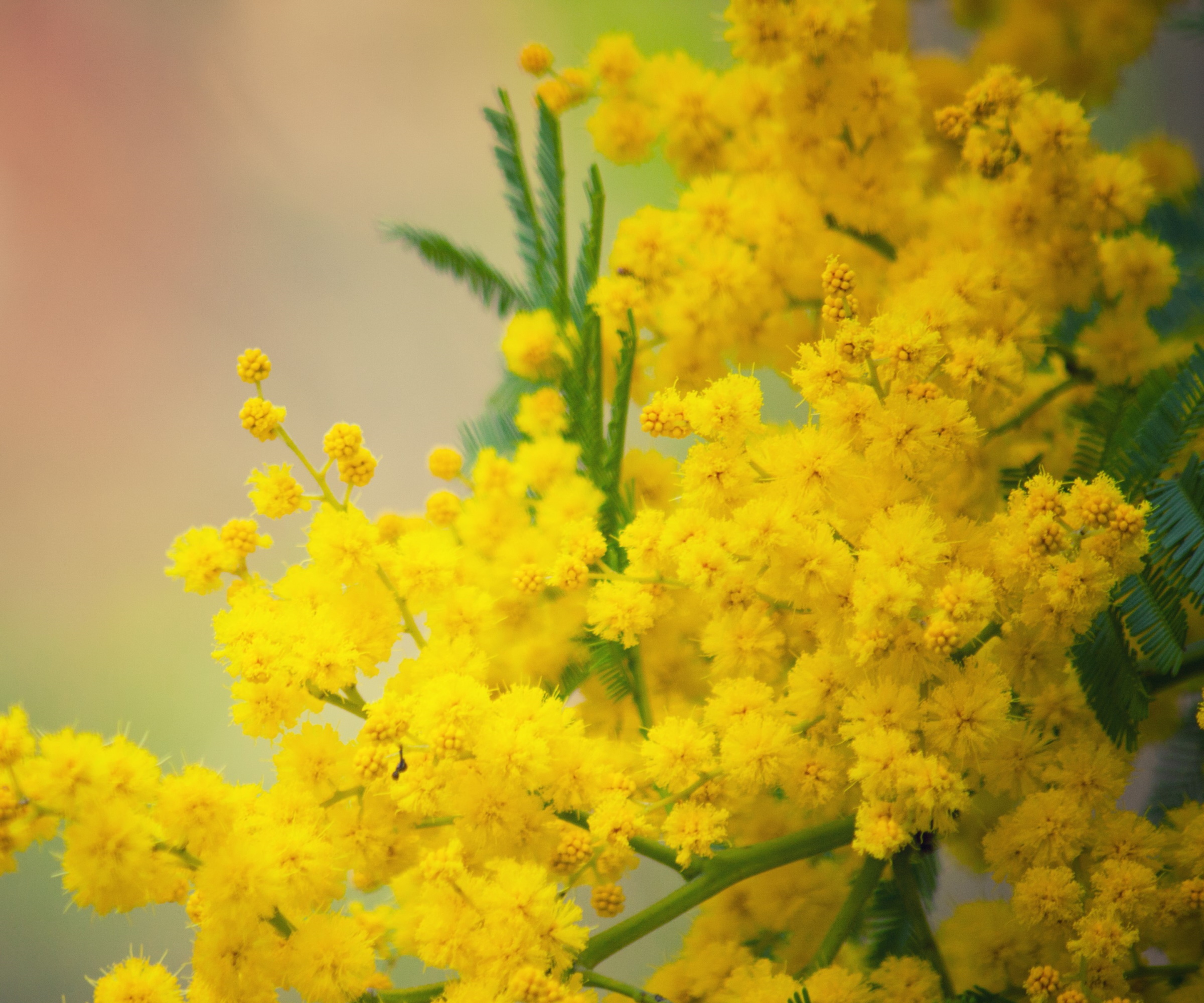
Few would deny the beauty of the mimosa tree in springtime. When other shrubs and deciduous trees remain dormant through their winter slumber, this evergreen tree bursts with clusters of golden-yellow flowers that hum with pollinator activity. From afar, a group of mimosa trees appear painterly, turning green landscapes into gold, even if just for a short time.
The mimosa tree, or Acacia dealbata, is native to southeastern Australia, preferring locations that enjoy long hours of sun. With attractive, fern-like foliage and masses of fragrant, golden-yellow blooms, it is easy to see why this tree has been a crowd-pleaser. Despite its native habitat being in Australia, the fast-growing mimosa has been cultivated in various and numerous regions globally.
Yet, for all its golden beauty, mimosa is considered an invasive species because of its ability to successfully and rapidly spread. In warmer zones and areas of the United States, including in California, Texas and Florida it is today classified as invasive. If you already have a mimosa tree, there are pruning and maintenance tips that can help you to keep this vigorous tree in check. With successful pruning and care, you can prevent further spreading and help to keep mimosa under control.

How to care for mimosa
Mimosa are popular trees, with stunning spring displays of fragrant, golden-yellow blooms. However, it is considered invasive in several zones and areas of the United States. By following our simple pruning and maintenance tips, you can help to keep this tree in check.
Things to consider about mimosa trees

The golden-yellow blooms of mimosa certainly add interest and impact to the landscape or a backyard. With 'feathery fern-like foliage and a distinctive umbrella-shaped canopy,' says Fern Berg, tree expert and found of Tree Vitalize, it is hard not to fall for mimosa.
Growing well in US hardiness zones 6 - 10, the mimosa 'adapts well to hot, dry conditions and full sun,' says Fern. As a drought-tolerant tree, it is not 'overly picky about soil type but does best in a well-draining soil.'
Since its introduction as an ornamental tree, mimosa is now found growing in a variety of areas across the US. It is a vigorous grower and competes with native species for space. Today, it is classified by many states as an invasive species and can be found spreading along roadsides, streams and in forested areas.
It is important to consult your local municipality for guidance on what species are invasive in your local area and should not be planted or propagated. If you have a mimosa tree already planted in your yard, there are some top tips to follow when pruning and maintaining vigorous evergreen shrubs and trees to keep them under control.
How to prune and maintain mimosa

Your 'mimosa tree will certainly benefit from pruning,' Fern says. 'Pruning is best done in early spring, after flowering but before the new growth starts'. It is recommended that pruning is done once there is no risk of frost, which will be determined by the zone that you live in.
Your pruning approach will be determined by the location and placement of your tree and the desired shape you want to achieve. Most mimosa trees will have one central trunk with a canopy above, and depending on your yard, you will want to keep this canopy to a certain shape and compact size.
'Begin by removing any dead or damaged branches and any crossed branches to prevent rubbing,' Fern says. Whilst this is relatively straightforward, there are pruning mistakes to watch out for. Be sure to always use clean pruning shears and sharp tools to ensure a clean cut, using shears such as these Lopper and Tree Trimmer from Amazon or these Heavy Duty Secateurs from Amazon.
Remove any suckers growing from the base of the tree, and clear the bottom third of the trunk to keep the shape. After flowering, you can remove one third of growth from the canopy, going on to 'lightly shape your tree,' Fern says. Importantly, 'mimosas generally look best when allowed to grow and take on their natural umbrella-like shape,' Fern says, so consider this if you are looking to maintain a natural shape. It is always best to take your time, snip, stand back, and then snip again. There is certainly an art to good pruning.
Heavy duty hand tool for pruning with comfortable and anti-slip handle in red. This tool can cut through 1/2", 3/4" and 1 inch diameter branches depending on the wood. Ideal for deadheading, trimming, shaping on tree, roses and other plants.
FAQs
Is mimosa an invasive species?
Many mimosa species are classified as invasive species across the world, including in New Zealand, Portugal and in certain states in the US, including Florida, Texas and California. For this reason, planting a new mimosa tree is not recommended. Advice should be sought from your local municipality regarding invasive species and what to avoid. If you already have a mimosa tree, it is recommended to prune and maintain your tree to keep it from spreading.
When is the best time to prune my mimosa?
The best time to prune your mimosa tree is in the spring after the golden-yellow blooms have finished and once there is no risk of frost. Mimosa trees, whilst tolerant of light pruning, will not react well to heavy pruning of more than one third of the tree. Next year's blooms will flower on this year's growth, so it is important not to prune after this time if you want an impressive display the following year.
If you are looking for other, less vigorous, trees with blossom, there are numerous trees for small gardens and yards that you should consider. One option is the ever-popular flowering cherry tree, with attractive blossom that is a sure sign of spring.







